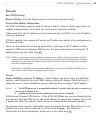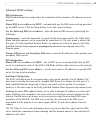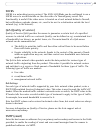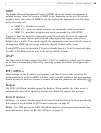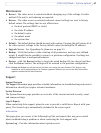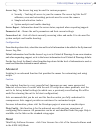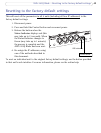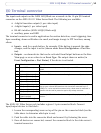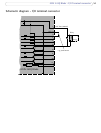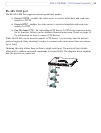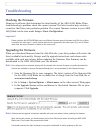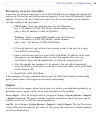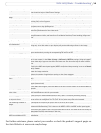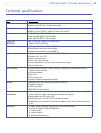
50
AXIS 243Q Blade - I/O Terminal connector
I/O Terminal connector
The inputs and outputs on the AXIS 243Q Blade are accessed via the 12-pin I/O terminal
connector on the AXIS 291 1U Video Server Rack. The following are available:
• 4 digital transistor outputs (1 per video input)
• 4 digital inputs (1 per video input)
• RS-485 interface (AXIS 243Q(1) Blade only)
• auxiliary power and GND
The terminal connector is used in applications for mo
tion detection, event triggering, time
lapse recording, alarm notification via email, and image storage to FTP locations, among
others.
• Inputs
- used for a push button, for example. If the button is pressed, the state
changes, and the input is active (shown under Event Configuration > Port Sta-
tus).
• Outputs - an alarm device that ca
n be activated from Output buttons on the Live
View page or as an action to an Event Type. The output shows as active (in
Event Configuration > Port Status), if the device is activated.
The AXIS 291 Video Server rack includes a
green 12-pin connector block. Connect
input/output devices to this block:
1. Loosen the corresponding screw on top of
the pin on the connector block (see the
table above to determine which pin to use).
2. Push the cable into the connector block and secure it by fastening the screw.
3. Once all devices are connected, connect the connector block to the video server’s
terminal connector.
Pin Function Description
1 +12V DC Power output This pin can be used to power auxiliary equipment, 12V DC max 100mA per
blade.
2 GND Ground
3 I
nput 1 (Video input 1) Connect to GND to activate or leave floating (or unconnected) to deactivate.
4 Input 2 (Video input 2)
5 Input 3 (Video input 3)
6 Input 4 (Video input 4)
7 Output 1 (Video input 1) With a maximum load of 100mA and maximum voltage of 24V DC, the output
has an open-collector NPN transistor with the emitter connected to pin 2
(GND). If it is to be used with an external relay, a diode must be connected in
parallel with the load for protection against any voltage transients.
8 Output 2 (Video input 2)
9 Output 3 (Video input 3)
10 Output 4 (Video input 4)
11 RS-485-A
(non-inverting)
A half-duplex RS-485 interface for controlling auxiliary equipment, e g. PTZ
devices.
12 RS-485-B (inverting)



